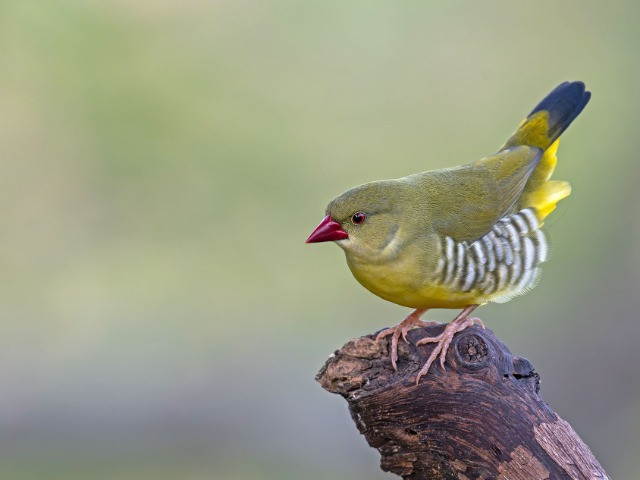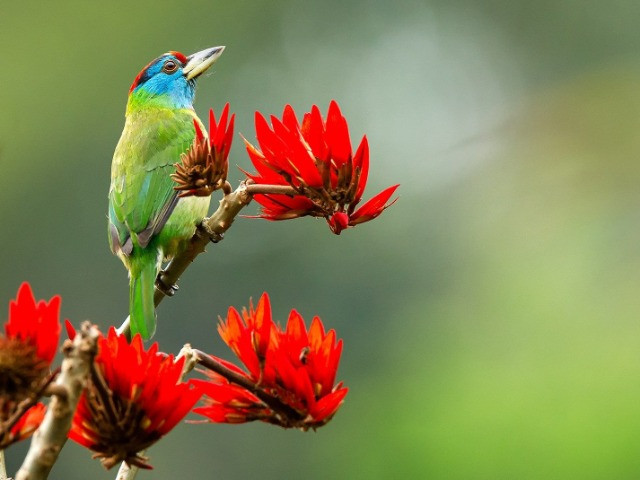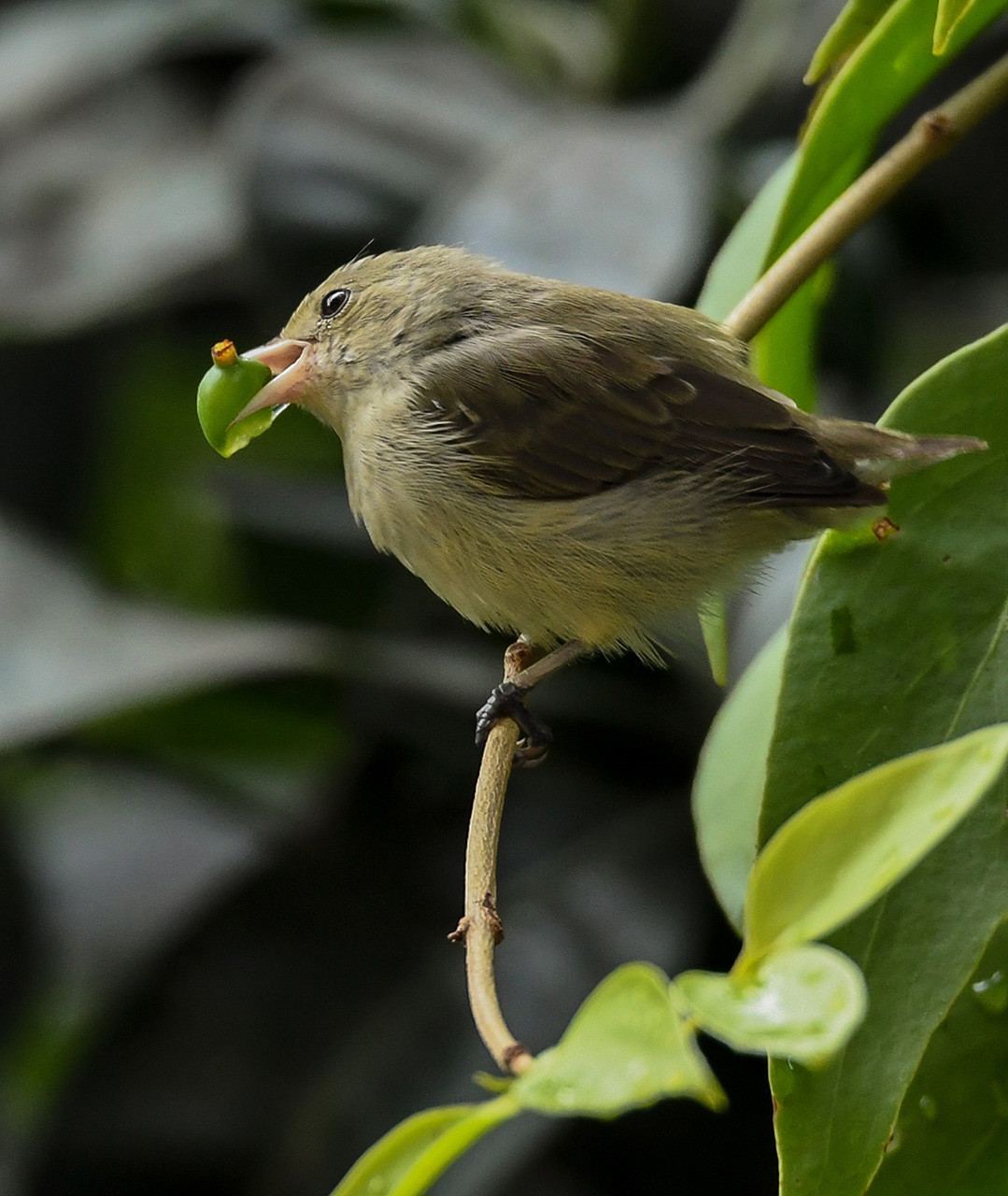Urbanisation has taken over much of our metro cities, but parts of Mumbai still have a bit of greenery left. My home in Kandivali shelters many species of birds, small reptiles (primarily ophidians), insects and mammals. I have been lucky to observe and document mammals such as the Indian Grey Mongoose and Small Indian Civet. But, with the main suburban area undergoing plenty of development in the last decade, most of the species have shifted eastwards into Sanjay Gandhi National Park (SGNP). Kandivali’s green belt used to be a part of the agricultural lands until the 1980s, after which highrises and building complexes left the belt fragmented, displacing most of the species.
A few feet from my balcony, on a mango tree, was a Dendrophthoe sp. in bloom. I was well aware that this partial parasite, which comes into bloom every alternate season after the monsoons, gave me the perfect opportunity to observe and photograph avian visitors in close quarters. As predicted, birds of many species started showing up and one, in particular, piqued my interest—the Pale-billed Flowerpecker.
Its shrill and sharp whistle (thik-thik), which echoed faintly through the premises, helped me to locate the avian through the canopy. Initially, I didn’t know anything about the behaviour of this bird, what its feeding pattern was like, how it acts in the presence of humans and who were its major predators. But eventually, all these questions were answered by the little fellow himself. I dove deep into the internet and saw photographs, and videos and listened to audio samples of the bird. But some of the behaviours I had witnessed didn’t show up on the web. I decided to document my observations and have done so every season since.
Swift, With a Karambit
The Pale-billed Flowerpecker (Dicaeum erythrorhynchos) belongs to the Dicaeidae family in the order Passeriformes. Measuring approximately 8cm in length, it is the smallest bird in the flowerpecker family. The plumage colour of the tiny bird can vary from brownish to almost olive green. This colouration makes it easy for them to camouflage amongst the canopy and hide from predators. It is difficult to tell the two sexes apart by only looking at their physical features. The avian's sharp, tiny beak, slightly curved like a karambit (curved knife), is perfect for pricking buds and fruits. A shy, swift, restless or rather highly curious and intelligent bird, documenting the flowerpecker's behaviour was far from an easy endeavour. The bird has quick reflexes and hides the moment it feels insecure.
You may also like to read
Pecker and the Mistletoe
The Pale-billed Flowerpecker’s diet is composed of berries, nectar, spiders and small insects. It plays a vital role in seed distribution and pollination, majorly in partial parasites like Dendrophthoe sp. Other fruit and flower-bearing trees that it visits are mango, custard apple, jamun, fig, Copperpod and Palash.
But, the bird seems to have a special connection with plants that belong to the genus Dendrophthoe. Part of the mistletoe family, they grow on branches of trees, utilising the host tree for physical support as well as nutrients like water and minerals. They remain photosynthetic, so they are called partial parasites. These plants provide the flowerpecker nectar and fibre supplements, and in return, the bird acts as a pollinator. It was no surprise that there was more than one such plant on the mango tree, indicating successful seed dispersal and pollination.
Every 20-25 minutes, the bird would return to the plant for nectar and announce its exit with a shrill whistle. I tried interacting with the bird by vocalising. Although it is ideal to remain silent while observing birds, this particular individual was very used to my presence by now, as one would expect.
Pouch With a Hole
The Pale-billed Flowerpecker makes its nest from cotton, cobweb, hair, moss, soft twigs, foam etc. This individual had a nest in an adjacent mango tree, which was disrupted by a crow, plummeting the nest to the ground and allowing me to get a closer look. The nest was like a small pouch with a hole at the bottom from where the bird would enter. Extremely lightweight, it looked a lot clumsier in appearance, which probably helped it blend within the canopy. The nest was springy and intricately woven, primed to withstand strong wind currents. I didn’t get to see the eggs, but according to many websites, the bird lays 2-3 eggs. Now, these nests are strategically placed, sometimes even on the tip of a branch, to make it difficult for snakes to enter the nest.
Foes and Allies
The flowerpecker is preyed upon by many other species of birds. The most common predators I have observed are crows, kites, kingfishers, Shikra and Greater Coucal. Crows are regularly observed disrupting flowerpecker nests for their eggs and chicks. A Shikra has often been seen on the premises, although it hasn't been able to catch the tiny avian yet. The Greater Coucal visits in the spring season looking for grub and has spooked the flowerpecker to hide in the canopy.
The passerine also has other allies, namely sunbirds, fantails, tailorbirds, sparrows, squirrels, orioles and spiderhunters. I recently observed a White-throated Kingfisher hiding in a tree, and if not for the flowerpecker alerting its ally, the sunbird would have fallen prey to the predator. The sunbirds and the flowerpecker are daily visitors and have exponentially increased the population of Dendrophthoe sp. plants in the area.
So the next time you see such partially parasitic plants on trees, don’t cut them off. They do not harm the host plant. In return, you may get to witness these wonderful little birds that visit for their fruits and flowers.










